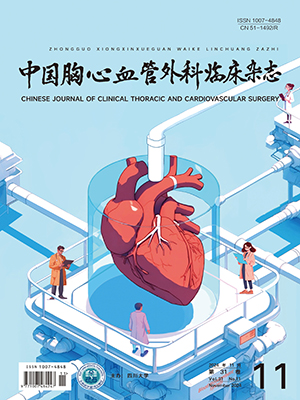| 1. |
Feng RM, Zong YN, Cao SM, et al. Current cancer situation in China: Good or bad news from the 2018 Global Cancer Statistics? Cancer Commun (Lond), 2019, 39(1): 22.
|
| 2. |
Xia C, Dong X, Li H, et al. Cancer statistics in China and United States, 2022: Profiles, trends, and determinants. Chin Med J (Engl), 2022, 135(5): 584-590.
|
| 3. |
Abbott TEF, Fowler AJ, Pelosi P, et al. A systematic review and consensus definitions for standardised end-points in perioperative medicine: Pulmonary complications. Br J Anaesth, 2018, 120(5): 1066-1079.
|
| 4. |
Wang S, Li X, Li Y, et al. The long-term impact of postoperative pulmonary complications after video-assisted thoracic surgery lobectomy for lung cancer. J Thorac Dis, 2017, 9(12): 5143-5152.
|
| 5. |
Tsutani Y, Tsubokawa N, Ito M, et al. Postoperative complications and prognosis after lobar resection versus sublobar resection in elderly patients with clinical stageⅠ non-small-cell lung cancer. Eur J Cardiothorac Surg, 2018, 53(2): 366-371.
|
| 6. |
Agostini PJ, Lugg ST, Adams K, et al. Risk factors and short-term outcomes of postoperative pulmonary complications after VATS lobectomy. J Cardiothorac Surg, 2018, 13(1): 28.
|
| 7. |
Dong J, Mao Y, Li J, et al. Stair-climbing test predicts postoperative cardiopulmonary complications and hospital stay in patients with non-small cell lung cancer. Med Sci Monit, 2017, 23: 1436-1441.
|
| 8. |
Lai Y, Wang X, Li P, et al. Preoperative peak expiratory flow (PEF) for predicting postoperative pulmonary complications after lung cancer lobectomy: A prospective study with 725 cases. J Thorac Dis, 2018, 10(7): 4293-4301.
|
| 9. |
Pobiruchin M, Suleder J, Zowalla R, et al. Accuracy and adoption of wearable technology used by active citizens: A marathon event field study. JMIR Mhealth Uhealth, 2017, 5(2): e24.
|
| 10. |
Lee H, Kim HK, Kang D, et al. Prognostic value of 6-min walk test to predict postoperative cardiopulmonary complications in patients with non-small cell lung cancer. Chest, 2020, 157(6): 1665-1673.
|
| 11. |
Silva SSM, Jayawardana MW, Meyer D. Statistical methods to model and evaluate physical activity programs, using step counts: A systematic review. PLoS One, 2018, 13(11): e0206763.
|
| 12. |
Kraus WE, Janz KF, Powell KE, et al. Daily step counts for measuring physical activity exposure and its relation to health. Med Sci Sports Exerc, 2019, 51(6): 1206-1212.
|
| 13. |
Fang C, Zhang J, Zhou T, et al. Associations between daily step counts and physical fitness in preschool children. J Clin Med, 2020, 9(1): 163.
|
| 14. |
Gluck S, Summers MJ, Finnis ME, et al. An observational study investigating the use of patient-owned technology to quantify physical activity in survivors of critical illness. Aust Crit Care, 2020, 33(2): 137-143.
|
| 15. |
Low CA, Bovbjerg DH, Ahrendt S, et al. Fitbit step counts during inpatient recovery from cancer surgery as a predictor of readmission. Ann Behav Med, 2018, 52(1): 88-92.
|
| 16. |
McTiernan A, Friedenreich CM, Katzmarzyk PT, et al. Physical activity in cancer prevention and survival: A systematic review. Med Sci Sports Exerc, 2019, 51(6): 1252-1261.
|
| 17. |
Gravier FE, Smondack P, Prieur G, et al. Effects of exercise training in people with non-small cell lung cancer before lung resection: A systematic review and meta-analysis. Thorax, 2022, 77(5): 486-496.
|
| 18. |
Steffens D, Beckenkamp PR, Hancock M, et al. Preoperative exercise halves the postoperative complication rate in patients with lung cancer: A systematic review of the effect of exercise on complications, length of stay and quality of life in patients with cancer. Br J Sports Med, 2018, 52(5): 344.
|




